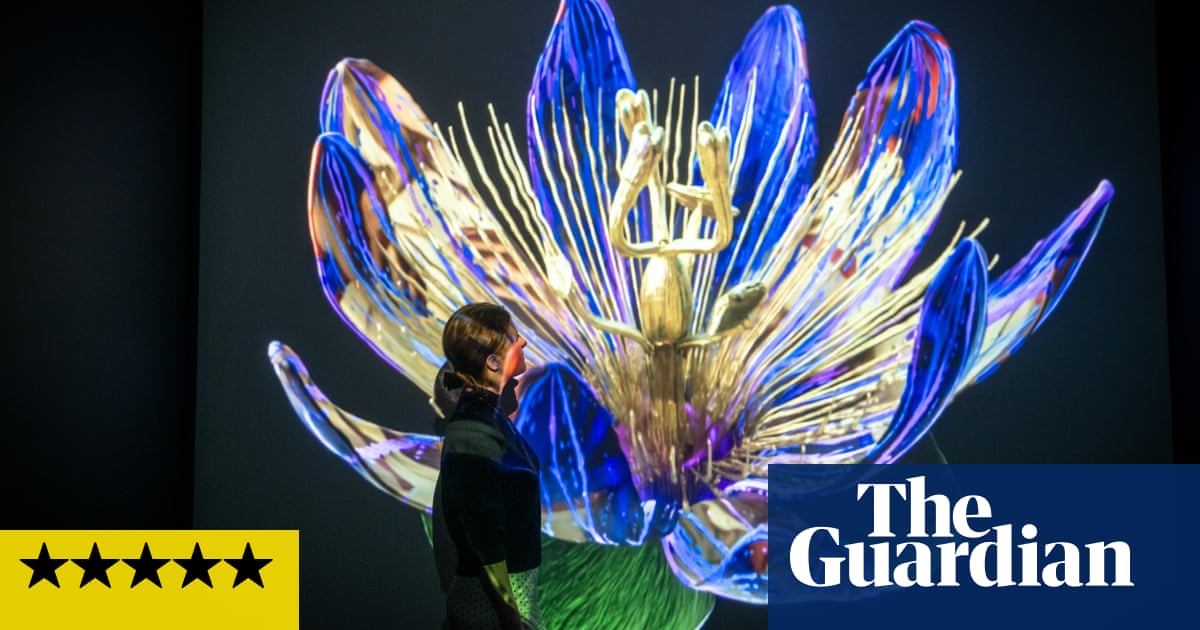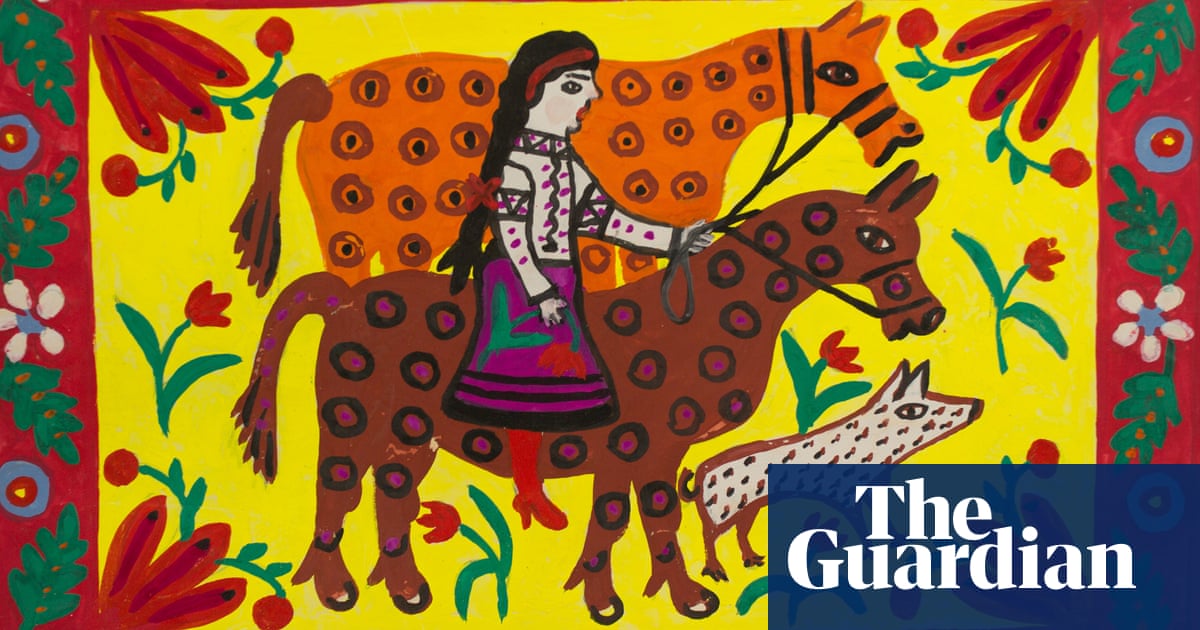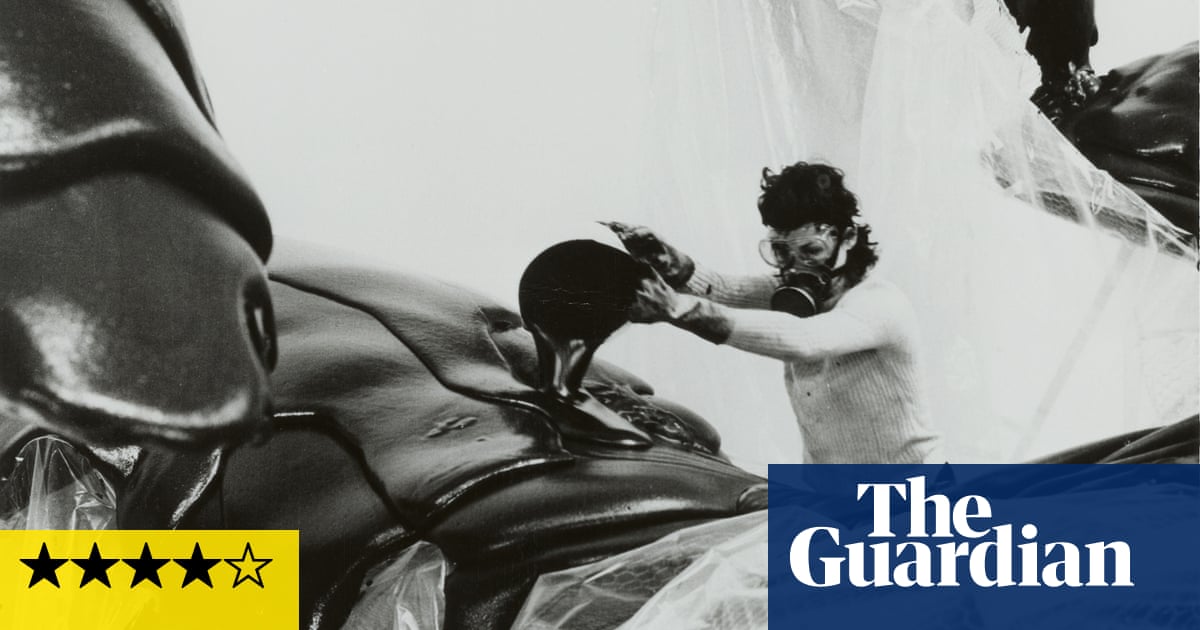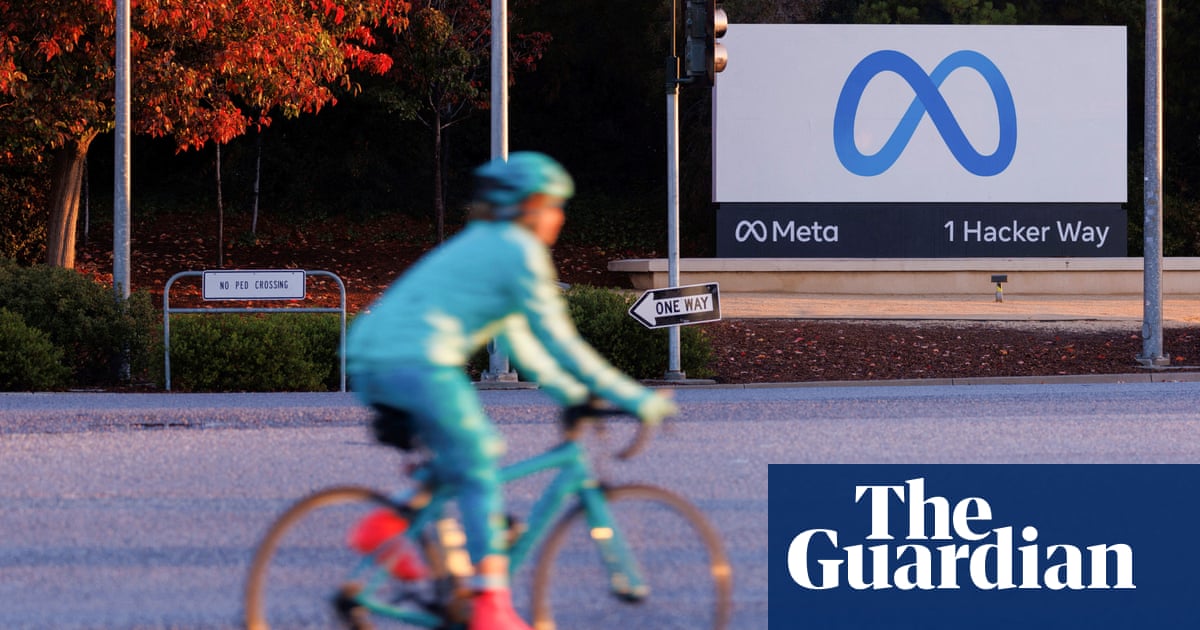
Something evil is blooming in a shady corner of Kew Gardens. Poisonous plants produce red fleshy flowers and sinister insects pretend to be harmless petals – or are the petals posing as insects? Mat Collishaw has created a creepy and beautiful, horrible and exquisite cabinet of botanical curiosities that puts the shock and sensation back into British modern art.
This clever, complex meditation on all the ways we humans represent and imagine the natural world contrasts brutally with Damien Hirst’s flower paintings, recently unveiled at Frieze art fair. It’s as if these two artists, who were contemporaries at Goldsmiths in the 1980s, have made some devilish bargain: Hirst got the money and Collishaw the brains, passion and integrity. Where Hirst now paints inane floral scenes, Collishaw digs deep into the gardens of the mind to leave you thrilled and moved.
It starts gently enough with flowers swaying in the breeze beside a rippling pool. Collishaw has taken two watercolours by the German Renaissance artist Albrecht Dürer and converted them into animated 3D lightboxes. Still life becomes restlessly mobile life.
This is a subtle introduction to a show that spectacularly examines our obsessive need to depict and collect nature. Dürer was one of the first artists to scientifically record the natural world, bringing the same sharp eye to a blade of grass that he did to a walrus. Collishaw revisits that pure act of observation in a digital age when we receive everything at second hand. It is art, not nature, that is his material. Throughout this show, life on Earth is recreated with stunning exactitude while being uncannily absent. It’s a natural history of our loss of nature.
A panoramic film entitled Even to the End feels like a modelling of Earth’s history created to inform the last humans on a spaceship light years away what their lost planet was like. It begins with specimens in glass cases, green shoots like the ones Dürer drew. Then we drift across an ocean to reach an island teeming with tangled roots and dense forest: every detail of this paradise is irresistible, like an Attenborough documentary, but everything is unreal, a virtual nature fabricated by a computer. And it all goes wrong. Smoke appears through the trees and we fly on, over a charred, lifeless wasteland. There’s nothing left.
Collishaw has fabricated this nature. Like a digital god, he creates trees then decides to destroy them. It’s a potent image of humanity’s tortured relationship with our planet – touched by all its wondrous life, yet drawn to the apocalyptic horror of a charred world.
The unease increases in a new series of paintings he has developed using AI tools. You see lovely still lifes of pink, yellow and red blooms that look like 17th-century Dutch paintings. On closer inspection the flowers are swarming with insects. Yet this is just one layer of the illusion. The flowers are actually imitating insects to trick real insects into collecting their pollen in a phenomenon called Pouyannian mimicry.
These deceptive blooms are shown along with Collishaw’s rancidly erotic, meaty sculptures of flowers that seem infected with human depravity: ripe red stamens rising from stinking waste ground.
Nature, it is implied, will have its revenge, and evolution will produce life to rule the post-human Earth. In the video Greenhouse, the apocalypse has happened: humanity has disappeared so suddenly that London’s National Gallery has been left untouched with its art still on the red walls. Now nature has smashed its way through the skylights and tendrils and creepers are everywhere. They invade the sanctum of culture, as the paintings by Guercino and Guido Reni rot.
By this time your senses are overwhelmed by intense floral colour and decaying sweetness, your mind tickled and stunned by the rush of ideas, but Collishaw has more marvels to unveil. The colossal pale spectre of an oak tree documents the Major Oak, a thousand-year-old tree in Sherwood Forest that’s associated with Robin Hood. This work was created when Britain was voting for Brexit and is called Albion. As you get closer and walk around the ghostly tree it vanishes: it was never really there.
It’s a fine political joke yet also a lyrical image of loss. Even the Major Oak must die one day, just as the Sycamore Gap tree on Hadrian’s Wall was mysteriously chopped down in a senseless act of ecocide. Collishaw creates and dismisses his phantom of a tree not with digital wizardry but a Victorian conjuring trick, the Pepper’s Ghost illusion. He loves such visual magic and is at it again in the show’s final wonder, a spinning sculpture based on the 19th-century proto-cinematic device the zoetrope, that makes hummingbirds appear to feed on nectar and tropical flowers open in a ecstatic natural dance show.
Ultimately all the sensory and scientific thrills leave you with a sense of loss. Collishaw shows that in the age of AI and virtual reality we can make our own nature, giving movement to painted flowers, inventing paradise islands. Yet none of it is alive. The more intricate his imitations of Earth’s plenitude, the more he makes you feel the fragility of the much greater complexity out there, in Kew Gardens.












